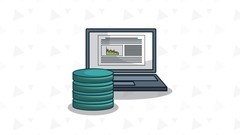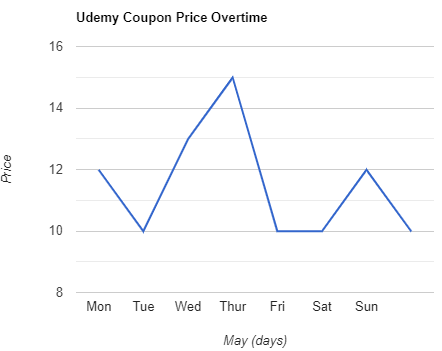Hands-on Serverless Computing with Go (Udemy.com)
Save time and resources by building applications with Golang and deploying them to AWS Lambda
Created by: Packt Publishing
Produced in 2018
 What you will learn
What you will learn
- What AWS (Amazon Web Services) are and how to access them
- How to write Lambda functions in Go and run them
- How to connect Lambda functions to the rest of your AWS services
- How to run Golang code as Lambda functions
- The AWS-Lambda Golang SDK and how to use it.
- Setting up and using DynamoDB
- Running sessions in a microservice environment.
- How to make sure your connections are secure using TLS
- How to attach your own domain to AWS
 Quality Score
Quality Score
Overall Score : 60 / 100
 Live Chat with CourseDuck's Co-Founder for Help
Live Chat with CourseDuck's Co-Founder for Help
 Course Description
Course Description
We will first get the Go function working on AWS by using the API-Gateway to call it. Using the AWS Command Line interface, we will build our functions on your local computer and save you having to and manage your Go code. Then we will use the AWS SDK to enable your Lambda Go functions to call into other AWS services such as the S3 Bucket. We will then connect the domain to AWS and add HTTPS/TLS security for your users.
Once we have the foundations in place, we will build a secure chat application named Logchat by maintaining sessions, where users must log in before speaking on the chat, introducing the services we need as we go.
With a hands-on approach, you will master security considerations in the AWs Suite, and how to maintain your serverless applications.
About the Author
Matthew Stoodley has been working in Golang for the last two years, and recently discovered the joy of serverless computing. If you are looking for a story teller, magician, illustrator, or a web developer, Matt is the guy for you.Who this course is for:
- This course is for developers who would like to build serverless applications with Go. Having prior Go programming knowledge will helpful but not vital. We won't be covering the Go Programming basics here.
- You need not know serverless programming or AWS Lambda. This course will teach you to work with AWS Lambda.
 Instructor Details
Instructor Details

- 3.0 Rating
 7 Reviews
7 Reviews
Packt Publishing
Packt has been committed to developer learning since 2004. A lot has changed in software since then - but Packt has remained responsive to these changes, continuing to look forward at the trends and tools defining the way we work and live. And how to put them to work.
With an extensive library of content - more than 4000 books and video courses -Packt's mission is to help developers stay relevant in a rapidly changing world. From new web frameworks and programming languages, to cutting edge data analytics, and DevOps, Packt takes software professionals in every field to what's important to them now.
From skills that will help you to develop and future proof your career to immediate solutions to every day tech challenges, Packt is a go-to resource to make you a better, smarter developer.
Packt Udemy courses continue this tradition, bringing you comprehensive yet concise video courses straight from the experts.







